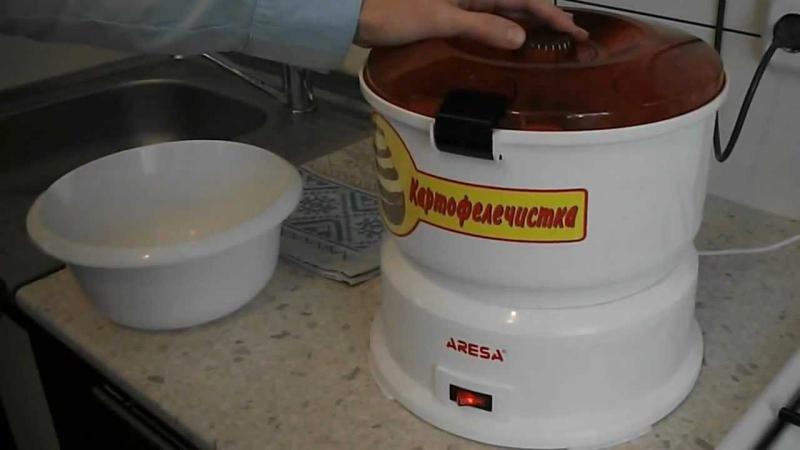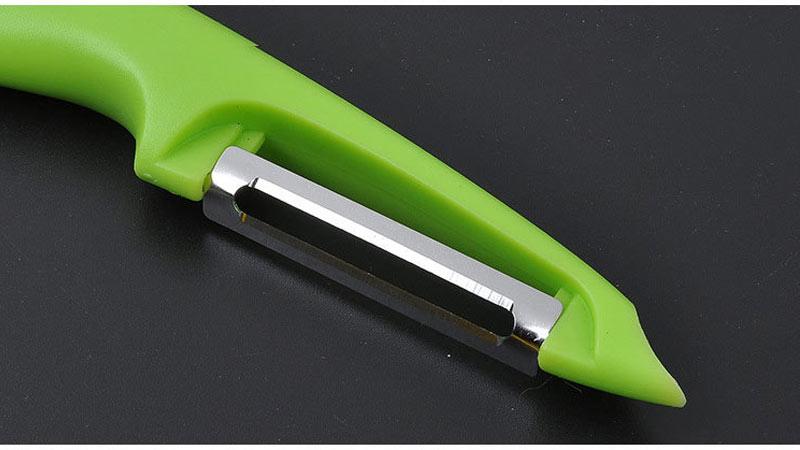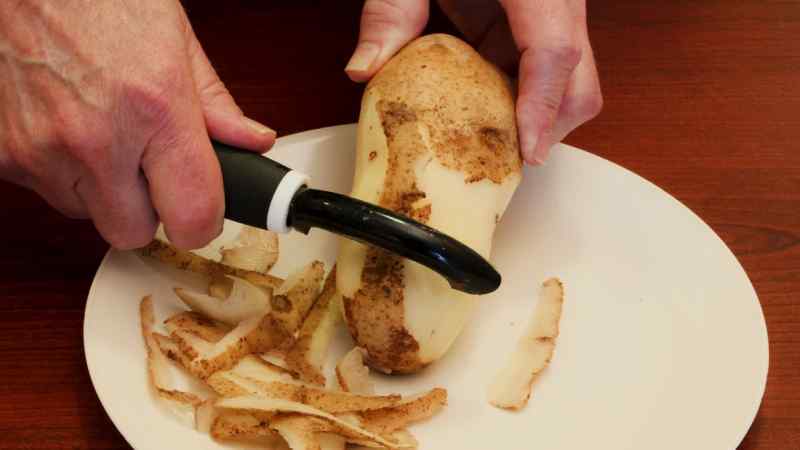What is the convenience of manual potato peelers
There are different models of potato peelers in stores, so it is not easy to choose the right one to help with your daily kitchen routine. We will tell you which models you should pay attention to and how to use them.
The content of the article
Types of potato peelers
All potato peelers are divided into three types, depending on the principle of operation. Below we will consider in detail their advantages and disadvantages.
Electrical
This type of device has increased performance. In 1 hour, an electric potato peeler peels 60 kg of potatoes - this is 10 times more than a person will do in the same time.
Such devices are of continuous and periodic action. The former are used in large enterprises and industries. The second - in professional kitchens, restaurants and cafes.
Manufacturers offer stationary and tabletop appliances. Desktop are mobile and smaller in size, they are easy to move if necessary, unlike stationary ones.

Mechanical
This is a compact type of autonomous potato peeler. There are instances that are powered by batteries. They are placed on any convenient surface. The tuber is fixed with a holder, it is cleaned with a sharp blade during rotation.
There are mechanical devices that peel several tubers at the same time. They are shaped like a bowl in which potatoes are placed. Turns of the handle, located on the surface of the body, make the bowl of tubers rotate and the skin is peeled off. The appliance is suitable for small or young potatoes - the skin must be tender and thin.
Manual

A popular species among most housewives. It looks like a handle made of plastic or metal. On top are the blades used to peel potatoes.
Note! Mechanical and manual peeling for potatoes is often used in everyday life to peel other vegetables and fruits.
What are the most convenient potato peelers
In professional kitchens, as well as frequent cooking for a large number of people, speed and volume are important. Even if the tubers are not completely processed with electric cleaning, it will still be faster than manually.
When using mechanical devices, less effort is spent on cleaning than manually. The downside is that in such devices, most often only one tuber is peeled at a time and not completely, since the top and bottom of the potato are narrow parts, and the blade of the device does not reach them.
With mechanical cleaning, the blade runs smoothly in a circle, and the surface of the tubers is usually uneven. Therefore, after processing with the device, all potatoes have to be cleaned manually. It turns out double work, but less effort is spent on manual labor.
The manual method is the most energy-consuming, but with such cleaning it is possible to control the process and clean the entire tuber at once.
Read also:
Preparing the soil for planting potatoes: what acidity of the earth is needed.
Criterias of choice
Choosing such a device, first determine the volume of potatoes that will be peeled and the frequency of use.
For businesses and restaurants, electrical models are suitable for quickly performing a large amount of work. It is worth paying attention to devices made of durable materials that wear out more slowly - stainless steel and abrasive inserts.
When comparing different models, important characteristics are taken into account:
- electricity consumption;
- ease of cleaning;
- ease of use.
Mechanical models for the home are chosen according to the principle of convenience and ergonomics - they shouldn't take up much space... For this, a photo of potato peelers is preliminarily studied. The material and fasteners should be reliable, the handle should be comfortable in the hand. Choose safe, closed models in which the risk of cutting is minimized.
The manual potato peeler should fit comfortably in your hand... Housewives prefer lightweight, compact models. The handle material must be non-slippery. Depending on personal preferences, the location of the blades is chosen: in some models they are located vertically, in others horizontally. It is better to choose a device with a long blade to quickly peel the tubers.
Benefits of manual potato peelers

Advantages of manual tuber cleaners:
- Quality. The tuber is completely cleaned. There is no need to further process the vegetable after electrical or mechanical cleaning - double work is excluded.
- The smoothness of the peeled tubers. When mechanically peeling, grooves from the blade appear on the vegetable, and the potatoes are corrugated. Not everyone likes this result - it's more common to see even cuts.
- Compactness. Hand tools do not need to be stored in boxes so that they do not deteriorate or get dirty, do not need to be put on shelves in cabinets. They are always at hand, which shortens the cooking time.
- Saving time. No need to wash containers, lids, removable surfaces after the cooking process. It is enough to rinse the blades.
- Price. Manual potato peelers are the most economical for everyday use. If the blade becomes dull or breaks, you can buy a new attachment.
- Availability. Such devices are sold in any supermarket. There is no need to go to specialized salons of household appliances or wait for an order from an online store.
Recommendations for peeling potatoes
Experienced housewives advise:
- Before cleaning, clean the tubers from dirt and wash.
- Peel the peel by hand as thin as possible, if it is a crop from your site, in order to preserve useful substances. Shoot more if store bought potatoes.
- Completely cut green areas on the surface of the tubers. If more than 1/3 of the tuber is colored green, it is not worth eating it even after peeling.
- Place the peeled potatoes in cold water so that they do not darken.
The classic way is to hold the tuber with one hand and peel it by weight with the other. There is another option that reduces the risk of cuts and makes the process more convenient:
- Cut the tuber in half so that it can be placed vertically on a cutting board.
- Hold the top of the tuber with one hand.
- With the other hand, cut the skin from top to bottom.
Young potatoes from their own plot do not need peelers. It is enough to rinse it with water and rub it with your hands or a new thick sponge, and the thin skin will come off by itself.
It is interesting:
Step by step instructions for creating a homemade potato planter.
Conclusion
Despite the emergence of mechanical and electrical devices to facilitate daily work in the kitchen, manual potato peelers remain the most popular - they are compact, affordable, and easy to use.